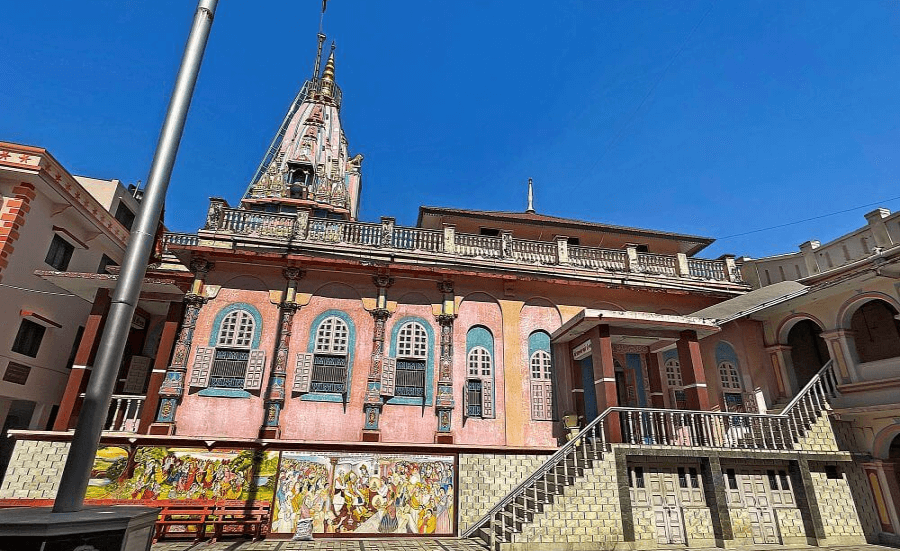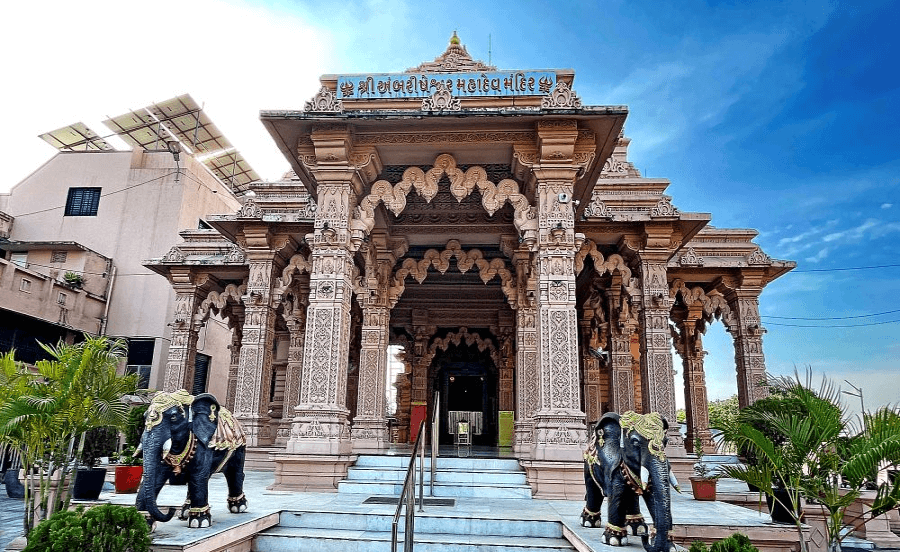
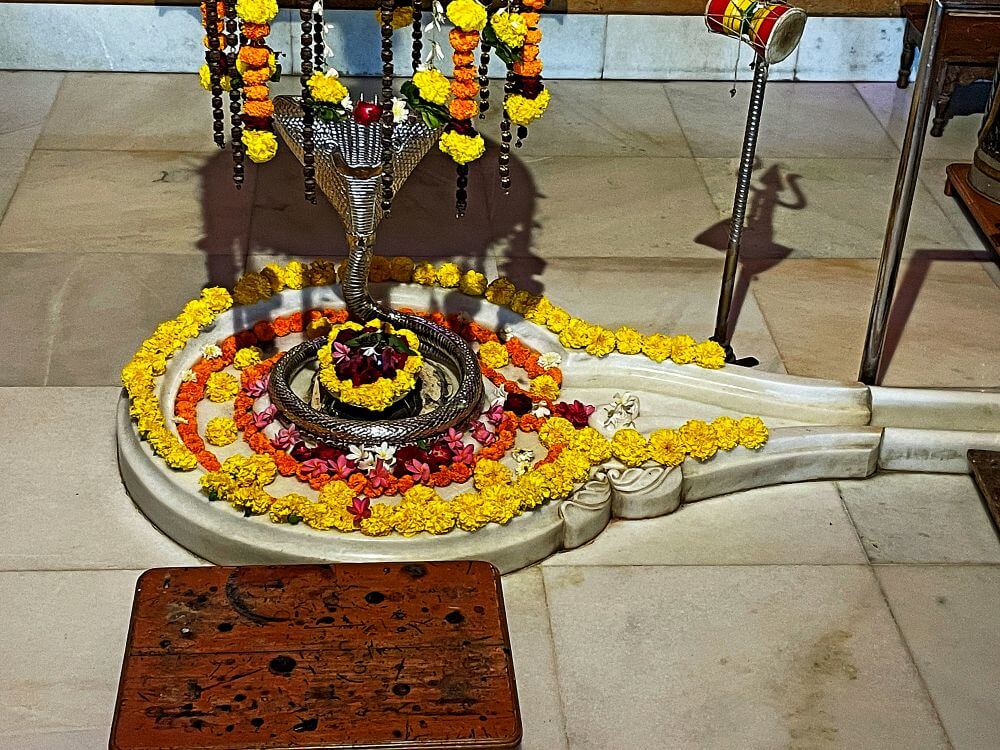 Situated in the quaint village of Abrama in Surat district, the Ambareesheshwar Mahadev Temple is deeply linked to the mythical significance of the Tapi River. According to legend, King Ambarish, a devout follower of Vishnu from the Suryavanshi lineage, consecrated the Shiva Lingam here. Consequently, this Shivling is revered as Ambareesheshwar Mahadev. Devotees believe that worshipping this Lingam fulfils all wishes. Additionally, childless couples perform rituals on Putrada Ekadashi (a special occasion in the Hindu month of Paush), as it is believed to bless them with offspring. This sacred day draws large crowds to the temple.
Situated in the quaint village of Abrama in Surat district, the Ambareesheshwar Mahadev Temple is deeply linked to the mythical significance of the Tapi River. According to legend, King Ambarish, a devout follower of Vishnu from the Suryavanshi lineage, consecrated the Shiva Lingam here. Consequently, this Shivling is revered as Ambareesheshwar Mahadev. Devotees believe that worshipping this Lingam fulfils all wishes. Additionally, childless couples perform rituals on Putrada Ekadashi (a special occasion in the Hindu month of Paush), as it is believed to bless them with offspring. This sacred day draws large crowds to the temple.
The Tapi Purana and Tapi Mahatmya recount the temple’s origins, describing it as the Mahapapmochan Tirtha (a pilgrimage site that absolves great sins). 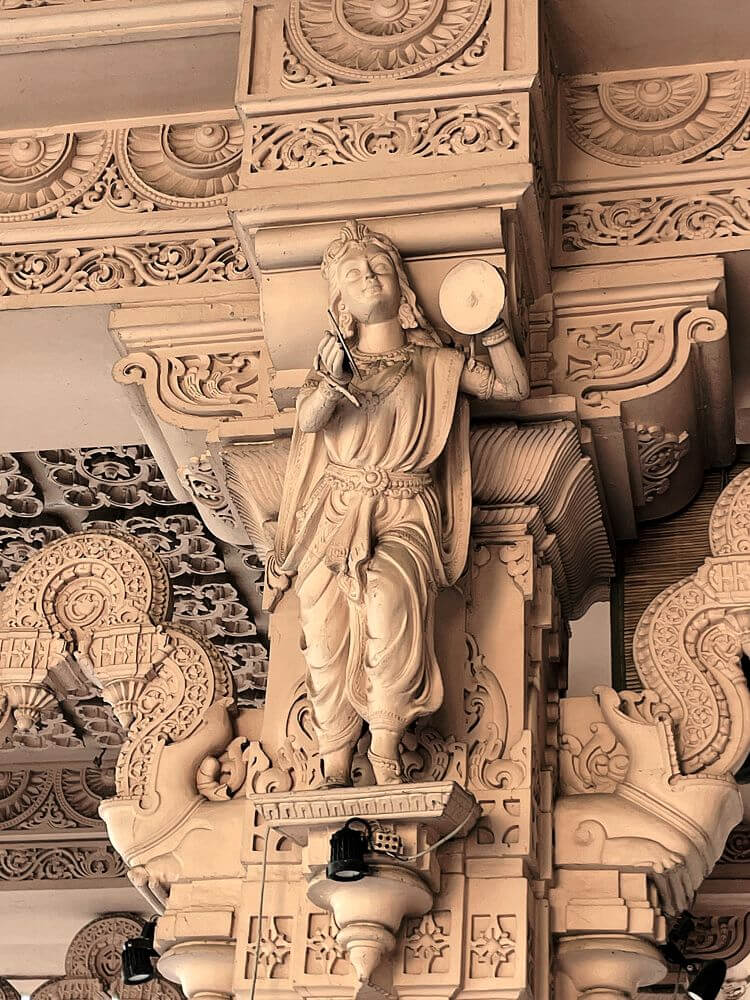 According to the legend, in ancient times, King Ambarish, renowned for his devotion to Vishnu and his steadfast commitment to dharma, ruled as a just and mighty monarch. He performed numerous yajnas (ritual sacrifices) and was deeply devoted to the Ekadashi fasts, which he would conclude by offering food to Brahmins on Dwadashi (the following day).
According to the legend, in ancient times, King Ambarish, renowned for his devotion to Vishnu and his steadfast commitment to dharma, ruled as a just and mighty monarch. He performed numerous yajnas (ritual sacrifices) and was deeply devoted to the Ekadashi fasts, which he would conclude by offering food to Brahmins on Dwadashi (the following day).
One Dwadashi, Durvasa Rishi, known for his fiery temper, visited Ambarish’s kingdom. The king warmly welcomed him and invited him to dine. However, Durvasa Rishi declared, ‘I will not eat before bathing in the Tapi River,’ and proceeded for a ritual bath. As time passed, the auspicious Dwadashi period began nearing its end, and Ambarish faced a dilemma – breaking the fast before his guest returned might offend the sage, but failing to conclude the fast on time would void its merit.
Upon consulting his Brahmin advisors, Ambarish performed a symbolic ritual to end his fast by consuming a Tulsi leaf while continuing to wait for Durvasa Rishi. When the sage returned and learned of this, he was furious. From his matted locks, he created a Krittya demon to kill Ambarish. The king, remaining composed, prayed to Vishnu for protection. Vishnu appeared, slaying the demon with his Sudarshan Chakra (divine discus). The Sudarshan Chakra then turned towards Durvasa, forcing him to flee.
Desperate to save himself, Durvasa sought refuge with Indra, Brahma, and Shiva, but none could intervene. 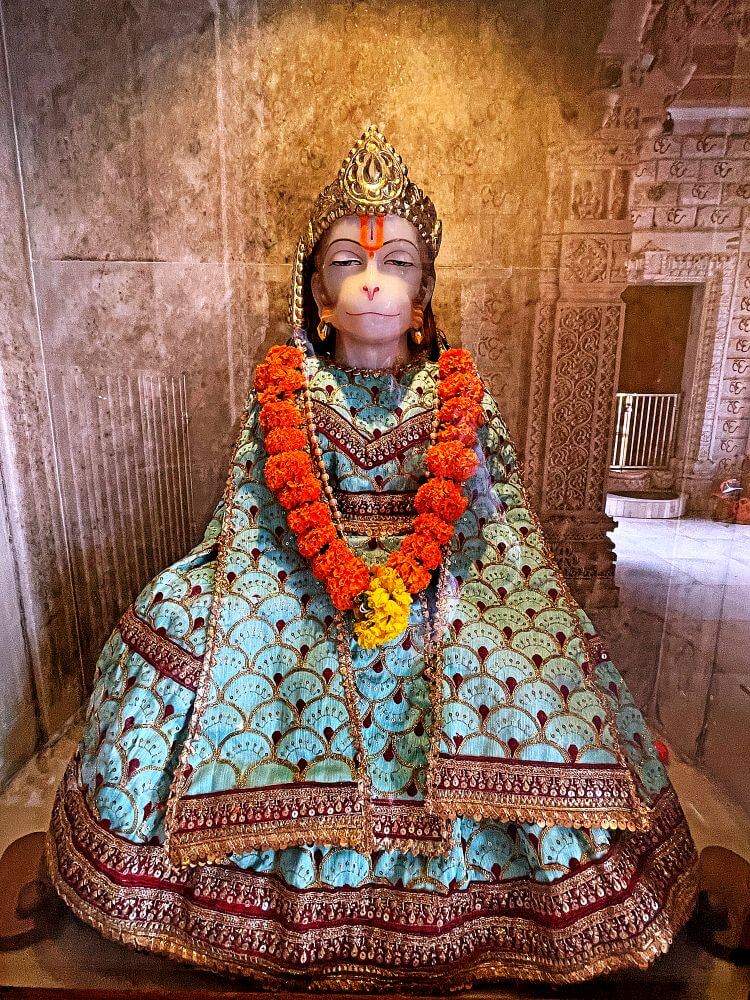 Finally, Vishnu explained, ‘I am bound by my devotees’ prayers. Only King Ambarish can save you.’ Realising his folly, Durvasa returned to Ambarish and begged for forgiveness. The king humbly accepted the sage’s apology, pacifying the Sudarshan Chakra. Overcome with gratitude, Durvasa blessed the king, who then consecrated the Ambareesheshwar Lingam in honour of Vishnu’s intervention.
Finally, Vishnu explained, ‘I am bound by my devotees’ prayers. Only King Ambarish can save you.’ Realising his folly, Durvasa returned to Ambarish and begged for forgiveness. The king humbly accepted the sage’s apology, pacifying the Sudarshan Chakra. Overcome with gratitude, Durvasa blessed the king, who then consecrated the Ambareesheshwar Lingam in honour of Vishnu’s intervention.
Originally located near the Tapi River, the temple was relocated to higher ground after a flood submerged the original structure. The present-day temple, situated amidst the bustling village of Abrama, showcases stunning architectural elements influenced by the Swaminarayan Akshardham style. Constructed using stones and craftsmanship brought from Rajasthan, it exudes a majestic aura.
The temple stands on a raised platform and features a mukhamandapam (entrance hall), a sabhamandapam (main hall), an antarala (connecting passage), and a garbhagriha (sanctum sanctorum). The pyramidal domes atop the halls and the intricately designed central Urushringa Shikhara (spire) are adorned with carved devakoshthas (niches housing deities). Sculpted Sur-Sundari (celestial maidens) grace the pillars inside the sabhamandapam.
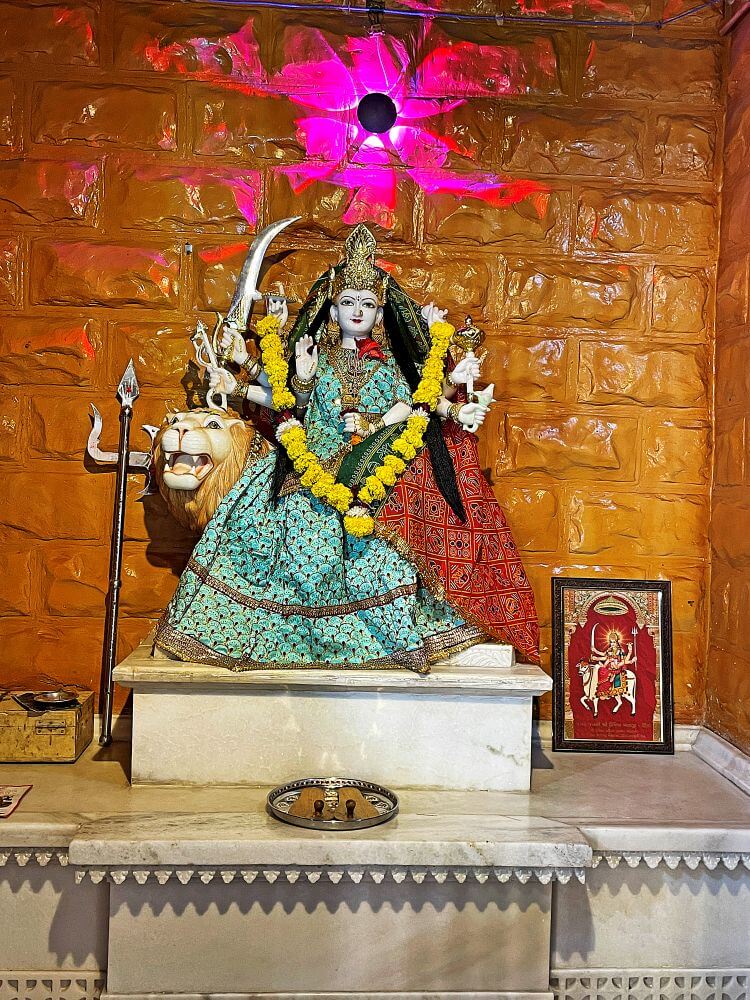 A marble Nandi statue with a unique Panchamukhi Nag (five-headed cobra) carved on its forehead stands in the main hall. Adjacent to the Nandi are two small temples: one dedicated to Hanuman holding the Dronagiri mountain and the other to Ashtabhuja Ambe Mata. The sanctum houses the Ambareesheshwar Shivling, which rests on an intricately carved marble base. Above the Lingam is a silver Nagraj (serpent deity) and a silver canopy. The walls of the sanctum feature a depiction of Parvati in a devakoshtha.
A marble Nandi statue with a unique Panchamukhi Nag (five-headed cobra) carved on its forehead stands in the main hall. Adjacent to the Nandi are two small temples: one dedicated to Hanuman holding the Dronagiri mountain and the other to Ashtabhuja Ambe Mata. The sanctum houses the Ambareesheshwar Shivling, which rests on an intricately carved marble base. Above the Lingam is a silver Nagraj (serpent deity) and a silver canopy. The walls of the sanctum feature a depiction of Parvati in a devakoshtha.
The temple opens for darshan at 5:00 AM, with daily worship including Vedic hymns, flower offerings, and abhishekam (anointment of the Lingam). Aarti is performed thrice a day amidst the chanting of mantras. Mahashivaratri is celebrated with grand festivities, including elaborate abhishekam and devotional programmes. On Putrada Ekadashi, childless couples undertake Laghu Rudra Puja and bathe in the Tapi River before offering prayers at the temple. It is believed that couples blessed with children often donate gold, silver, or grain equal to the baby’s weight as gratitude. The temple organises a grand Shobha Yatra (procession) on this day, attracting scores of devotees. The Ambareesheshwar Mahadev Temple remains a beacon of spirituality, drawing devotees from all over for its mythical significance, architectural grandeur, and the hope of blessings.
